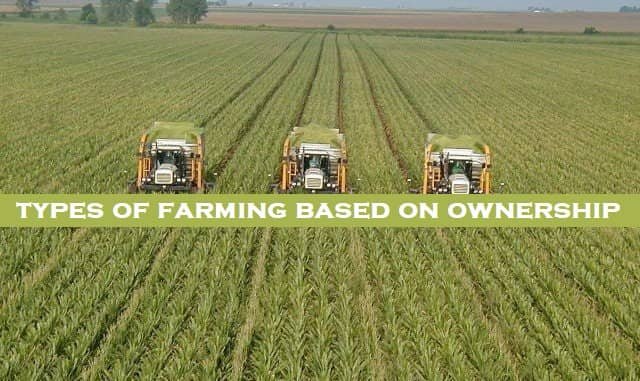Types of farming on the basis of ownership
There are 8 types of farming on the basis of ownership are given below.
- Family farming
- Co-operative farming
- Institutional farming
- Capitalistic farming
- State farming
- Personal farming
- Collective farming
- Corporate farming
Family farming
- All agricultural operations are done by family members.
- Capital and management are also provided by family members.
- The income is distributed by the head of the family according to the need of the members.
Co-operative farming
- All the members have the right of ownership in the business.
- The members voluntarily pull their resources for running the business.
- All the members are free and can leave society at any time without losing the ownership right of the land and resources.
- The income is distributed accord mg to the share of land, labor, and capital of the members.
Institutional farming
- Generally, the farm is used for conducting an experiment or demonstration by an institute.
- Farming is not on a commercial scale.
- The farm is well layout in respect to roads, irrigation channels, drainage, etc.
Capitalistic farming
- The investment of land and capital is done by big businessman or capitalist.
- Wages are paid to the laborers employed.
- Intensive and improved methods of cultivation arc adopted.
State farming
- Farming is done by the government.
- Farm managers are employed for conducting day to day agricultural operations.
- The farm may be mechanized or non-mechanized depending upon the size of the farm.
Personal farming
- Farmers have the ownership right on the land and establish farming independently.
- The right of ownership is heritable and transferable
- The farmer generally serves as a manager, labor and also an organizer of the farming business, but in need, he may employ extra laborers.
Collective farming
- It was first started in the Union of Soviet Socialist Republics; the members of collectives surrender their land, livestock and implement it to the society.
- Other people can also become a member.
- The members elect a managing committee which is responsible for allocation of work, distribution of income, marketing of the supplied products.
Corporate farming
- This is just like the capitalist system of farming, but the right of ownership is on the basis of shares taken by the members.
- The profit is distributed by the members.
- Intensive and improve methods of cultivation are adopted.

